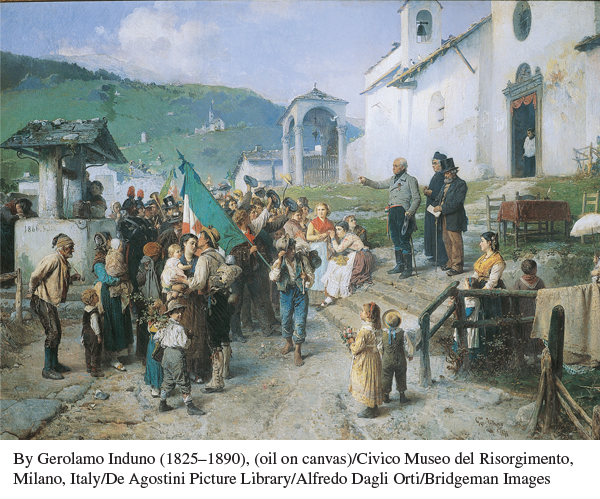A History of Western Society AP®: Printed Page 648-f
Attempts to manage the progressive forces associated with the French Revolution led first to a reassertion of conservative political control in continental Europe, as aristocratic leaders sought to stamp out the spread of liberal and democratic reforms and maintain equilibrium through balance-of-power diplomacy known as the Congress System. Conservatives backed up their ideology with military force and crushed reform in Austria, Germany, Russia, and much of the Italian peninsula. The innovations made possible by the democratic and industrial revolutions proved difficult to contain, however, and from 1815 to 1848 reformers and revolutionaries sought to limit the prerogatives of the powerful.
Full-scale revolutions broke out across Europe in 1848, and governments toppled, but in the end the revolutions failed, and reactionary leaders reasserted control. They were able to gain the support of the urban middle classes and even portions of the working classes by creating strong national states that promised economic growth and social benefits, a process that led to the unification of Italy and Germany. In Russia and the Ottoman Empire, leaders embraced some modernizing reforms that would allow them to compete with the Great Powers of western Europe. The unification of Germany opened a new era in international relations in which Europe divided into two rival blocs, and nationalism and militarism encouraged leaders and citizens alike to see international relations as an arena for testing national power, by war if necessary. Growing nationalism in the Balkans led to a series of regional conflicts that escalated in 1914 into a European-wide war. (Pages 682–691, 703–714, 754–778, 828–833)

By Gerolamo Induno (1825–1890), (oil on canvas)/Civico Museo del Risorgimento, Milano, Italy/De Agostini Picture Library/Alfredo Dagli Orti/Bridgeman Images
